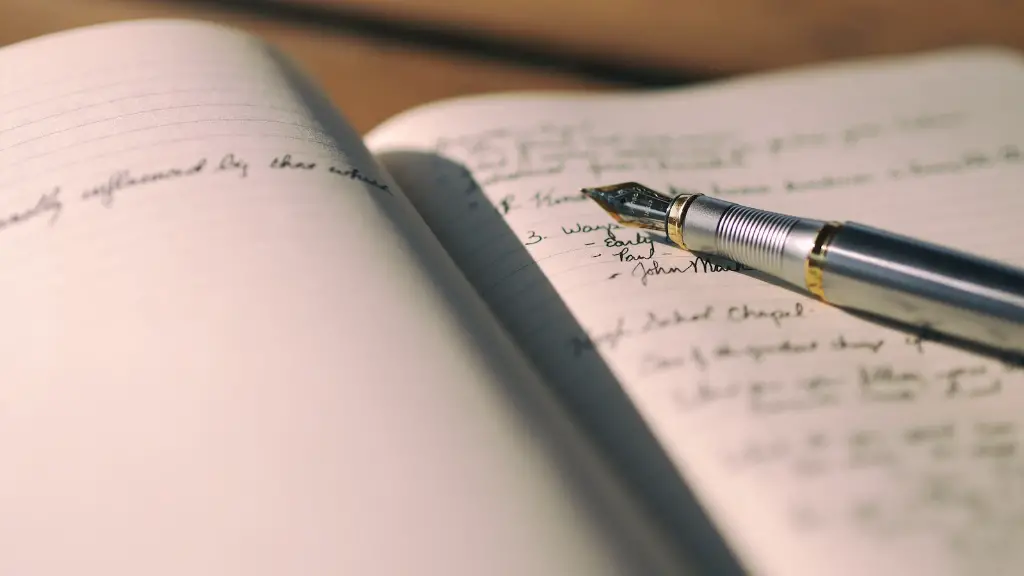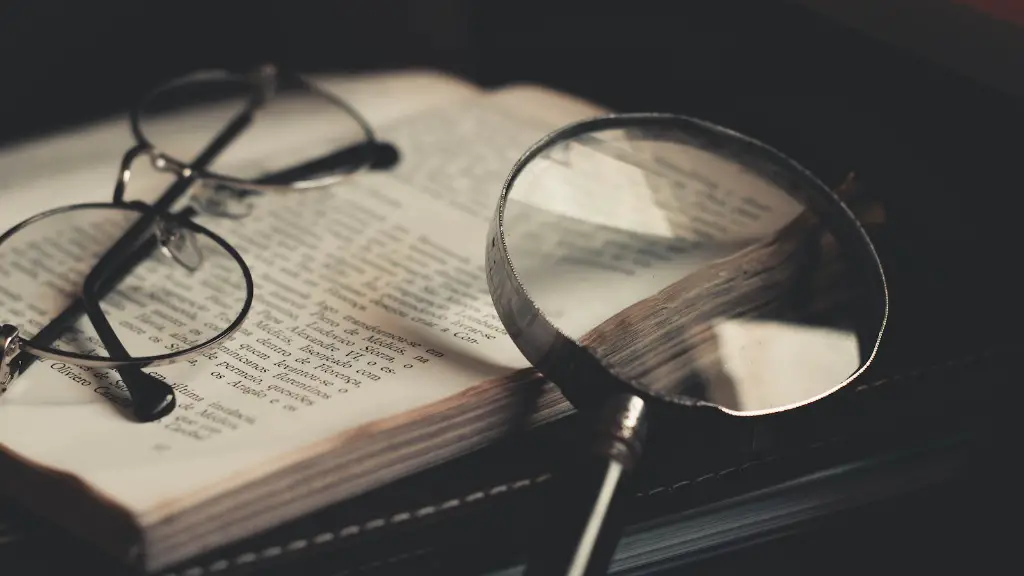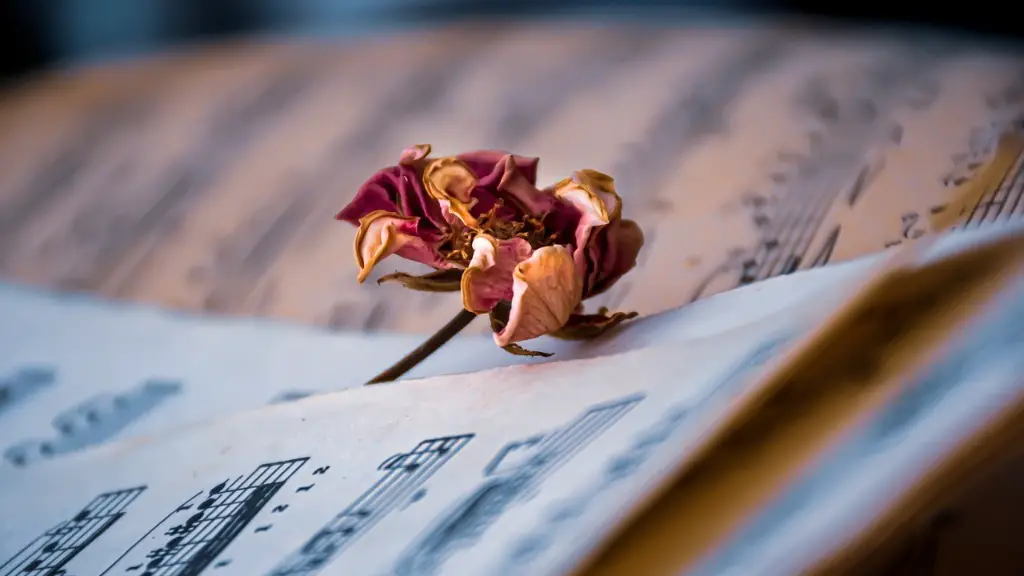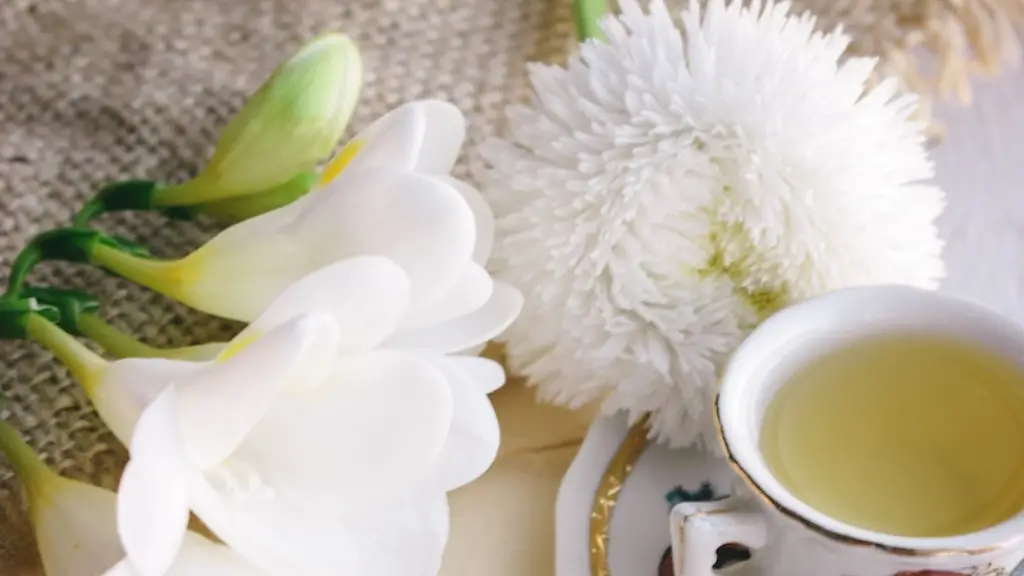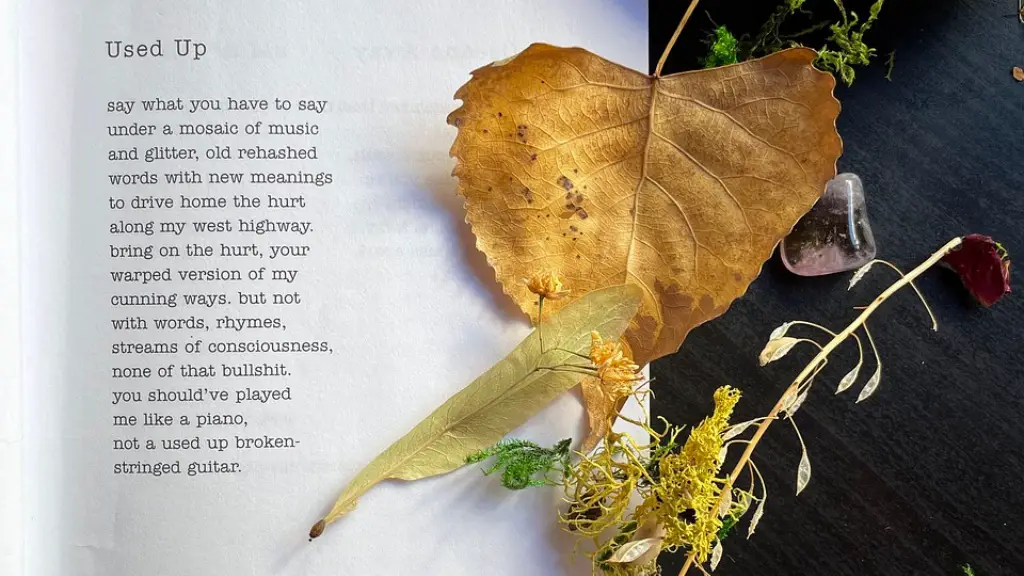What is a Shift in Poetry?
The term “shift” refers to a technique used in poetry whereby one changes the subject, syntax, or genre of their writing. A shift can be sudden, occurring within a single line, or it can span multiple lines or poems. A shift can also appear between two distinct voices or speakers. Different poets use the shift technique in different ways. Some use it to move between two ideas, while others use it to mimic conversation or describe a scene.
In poetry, a shift serves as a way to move between different topics, or to draw attention to detail, metaphor or meaning. It is used to paint images and suggest different ideas without being too direct. One of the main reasons poets use this technique is to make the reader think and interpret meaning, using the language and syntax of the poem.
A common way to achieve a shift is by breaking lines of poetry. Breaking lines implies a space in the poetry that can be used to show a change in topic, speaker, or tone. This technique is often used to create a faster and fuller sense of movement. By breaking lines, a poet also forces the reader to pause, allowing them to draw deeper connections between the ideas of the poem.
A poem may also use shifts to create a sense of time passing. By changing the time frame, a poet can show change and growth over a period of time. This creates a deeper emotional effect, as it allows the reader the chance to reflect on their own experiences. In addition, using shifts can create a sense of urgency in the reader, conveying a feeling of immediacy and forcing them to pay attention to each new idea.
There are many other techniques that could be used to create a shift in poetry. One example is to move between different points of view throughout the poem, allowing the reader to see the same scene from multiple perspectives. Another way to achieve a shift is to move between different styles of writing, such as free verse and more traditional forms of poetry. As a result, the reader is challenged to take in new and unexpected ways of thinking.
By using shifts, poets can challenge the reader to find deeper meaning in the poem. By moving quickly and suddenly between topics, a poet can force the reader to pay attention to the details and make connections between ideas. In this way, shifts can be used to create interesting and unexpected connections that the reader might not otherwise have made.
Exploring the Power of Language Through Shifts in Poetry
Through shifts and other techniques, poets can explore and dissect language in new and exciting ways. By changing words, syntax and grammar, poets can create multiple ways of interpreting a given poem. This allows poets to not only explore the power of language but also to challenge the traditional ways of understanding it. By transforming language and grammar, poets can create new and interesting connections that can be more easily understood by their readers.
In addition, shifts can be used to highlight the contrast between two speakers or ideas. Through shifts, poets can create powerful juxtapositions of ideas and feelings, allowing for the reader to draw their own conclusions about the topics presented. This encourages readers to think critically about the ideas being presented and draw their own conclusions.
Finally, shifts in poetry can be used to create a sense of suspense or surprise. By suddenly shifting between topics or voices, poets can create a sense of unexpectedness that will engage the reader and make them pay closer attention to the poem. This helps draw the reader in and keeps them engaged with the poem.
Shifting Voices in Poetry
One of the most interesting and powerful ways to use shifts in poetry is to create a dialogue between two voices. This technique is often used to contrast two ideas, feelings, or characters, allowing for a deeper exploration of the subject matter. By having two voices, poets can create a sense of contrast that can draw attention to the differences between them. This contrast can create a deeper level of understanding between the reader and the poem.
In addition, shifts between voices can be used to create a more dynamic dialogue between two speakers. This can create a stronger emotional impact, as the reader is able to understand both sides more clearly. Furthermore, shifts between voices can be used to create a sense of tension, allowing for the reader to experience the effects of different reactions and emotions.
Similarly, shifts can also be used to create a tone or mood in a poem. By changing the tone of a poem, a poet can draw attention to certain ideas and create a deeper level of understanding. This can allow for a more immersive experience, as the reader is able to experience the same emotions as the person speaking or experiencing the poem. In this way, shifts can be used to create a deeper level of understanding and engagement between the reader and the poem.
Exploring Emotions Through Shifts in Poetry
Shifts in poetry can also be used to explore emotions in a deeper and more meaningful way. By changing between languages and syntax, poets can highlight certain feelings and create a more immersive experience for the reader. By shifting between different contexts and memories, poets can explore the depths of human emotion and experience.
In addition, shifts can be used to create a sense of nostalgia in a poem. By moving between different time periods, a poet can cause the reader to reflect on their own memories and feelings. By jumping between past and present, poets can explore the emotional resonances of the poem and draw out the reader’s own personal experiences.
Finally, shifts can also be used to explore abstract concepts, such as love, hope, and joy. By using different syntax and language, poets can express these concepts in new and powerful ways. In this way, shifts can be used to draw attention to the overarching themes and ideas of a poem.
Creating New Perspectives Through Shifts in Poetry
Shifts in poetry can be used to create new perspectives and understanding. Through shifts, poets can challenge their readers to consider new ways of looking at things. By shifting between forms and genres, poets can draw attention to the power of language and its ability to create multiple and nuanced meanings.
In addition, shifts can be used to highlight the complexities of a situation or character. By shifting between different points of view, a poet can create a more dynamic understanding of an idea or situation. This added depth can create a more engaging and thoughtful experience for the reader.
Finally, shifts can be used to create a sense of movement in a poem. By moving between different topics or voices, poets can cause the reader to pay closer attention to the nuances and details of the poem. This can create a stronger emotional connection between the poem and the reader, as the reader is able to feel more invested in the poem.
Exploring Identity Through Shifts in Poetry
One of the most powerful reasons to use shifts in poetry is to explore the different aspects of identity. By jumping between topics and voices, poets can highlight and explore different elements of identity. This includes exploring race, gender, culture, language and other forms of identity.
In addition, shifts can also be used to highlight the complexity and beauty of identity. By jumping between different contexts, poets can draw attention to commonalities and differences between identities, creating a more nuanced understanding of the poem’s subject. By doing this, poets can create a more meaningful and powerful experience for their readers.
Finally, shifts can be used to create a sense of immediacy. By jumping between multiple voices and perspectives, poets can draw attention to the current moment in time and how it relates to identity. In this way, shifts can be used to create a powerful and impactful experience for the reader.
Exploring Power Through Shifts in Poetry
Shifts can be used to explore the different dynamics of power. By changing between topics and voices, poets can draw attention to different concepts of power and explore how these concepts play out in different contexts. This includes exploring notions of power, privilege and oppression.
In addition, shifts can be used to explore the effects of these dynamics. By jumping between different perspectives, poets can show how power and privilege play out differently for different people. This can create a more engaging experience for the reader, as they are able to understand how these dynamics can affect a person’s life.
Finally, shifts can be used to draw attention to patterns of power and privilege. By jumping between different contexts, poets can demonstrate how certain aspects of power may be propagated or perpetuated over time. By doing this, poets can create a more meaningful experience for their readers, as they are able to understand the effects of power and privilege in a more nuanced way.
